mmcartalk
Expert
- Messages
- 4,158
- Reactions
- 2,675
MM Retro-Write-Up: Pontiac Vibe 2002-2010 (Toyota Matrix)
IN A NUTSHELL: A nice useful/reliable Toyota Matrix with just a little more personality.

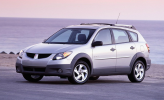
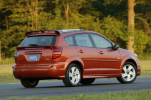
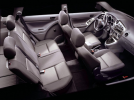
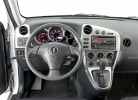
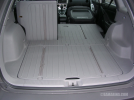
(Second-Generation Below)

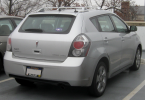
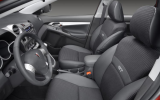
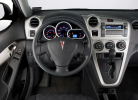
For those who wanted to “Buy American”, but, for any reason, did not actually want an American-designed vehicle, for many years and decades, GM has offered imported-nameplate vehicles (or vehicles designed by import-manufacturers) at its Chevrolet/Geo, Buick, Pontiac, and Cadillac dealerships, sold under the master GM organization. At Chevy, these included the Nova of the mid/late 1980s (a rebadged Toyota Corolla), the Chevrolet/Geo Prizm of the 1990s, another rebadged Corolla, the Chevrolet/Geo Tracker of the 1990s, a small truck-based rebadged Suzuki Sidekick/Vitara SUV, and the Chevrolet/Geo Storm of the early 1990s, which was a somewhat reworked version of the the Isuzu Impulse, the Isuzu-based Chevy Chevette subcompact of the late 70s/early 80s, and the the Chevrolet/Geo Metro, a tiny, super-economical minicar which was a rebadged Suzuki Sprint….but IMO was a flimsily-built deathtrap in an accident. At Buick, a line of German-sourced Opel Kadetts and Opel GTs were sold in the late 60s and early 70s (becoming the Isuzu-sourced line of Opels after 1976), and the Opel-based Verano compact sedan, subcompact Encore crossover, mid-size Regal sedan/wagon, and the compact Cascada convertible (all in the 2010s), At Cadillac, they sold the late-1990s Opel-sourced mid-sized Catera sedan (which, unlike the Opel-sourced Buicks, was, IMO, a piece of junk). At Pontiac, they sold the Holden/Australian-built GTO and G8 muscle-cars and the compact Vibe 5-door hatchback of the 2000s….the Vibe being the object of this write-up, which was a (mostly) rebadged version of the Toyota Matrix Hatchback, with a few Pontiac styling touches and revisions.
Except as I just noted above, the majority of these vehicles had generally good reputations, although the Chevette was known for excessive cheapness and almost military-starkness inside and out (the base Scooter version did not even have a back seat). The Chevy/Geo Prizm and Chevy Nova (the Geo-Division nameplate was introduced specifically for the import-sourced line) had an especially good reputation, as they shared the Toyota build-quality/reliability, high owner-satisfaction, without the (at the time) hassles of trying to bargain at Toyota dealerships with stubborn and sometimes-arrogant salespeople and the high demand for Toyota products. GM also, at the time, offered a somewhat better warranty than Toyota….although not much warranty-work was actually needed on these cars. I myself had a very high regard for the Prizm and Nova, and, on my recommendation, some of my neighbors and friends purchased them , and were also quite satisfied.
Such was also the case with the Pontiac Vibe, which was introduced as a Pontiac version of Toyota’s then-highly-regarded Matrix, which was Corolla-based. The Vibe, in some ways, like the Matrix, being a 5-door hatchback, was even more practical than the Prizm and Nova sedans (there was also a 5-door Nova hatchback). Pontiac, like Chevy, offered a better warranty than Toyota, although, again, these cars were generally reliable and not much warranty work was needed. They were even built in the same plants, on the same assembly-lines, as Toyotas. In addition, Pontiac dealerships usually did not have the same kind of traffic and demand that Chevy dealerships, and sold relatively few Vibes, so they had even more incentive to offer customers better deals and less stubbornness in the negotiation-process. Personally, at the time, I would have liked to seen all of the GM dealerships adopt the Saturn-style No-Dicker bargaining and 30-day money-return policy on new vehicles (Oldsmobile actually did for a short period), but, alas, that was generally not to be. And, after just a few more years later, with GM’s impending bankruptcy/reorganization, of all these divisions I noted, only Chevy, Buick, and Cadillac were even left in buisness….Olds, Pontiac, and Saturn had been relegated to automotive history.
Anyhow, back to the Pontiac Vibe. Two generations of Vibes were built, the first from 2000-2007, and the second from 2008-2009……I generally preferred the first. Like with its brother Toyota Matrix, Vibes were offered in either FWD or AWD, making them quite attractive as a small alternative to SUVs in the Snow Belt and other regions with bad weather…the space-efficiency of its boxy 5-door design also added to its practicality. I’ve already mentioned the Toyota reliability and build-solidness, and they were generally quite economical to operate. Over the years, depending on the trim-versions, 1.8L and 2.4L Toyota 4-cylinder normally-aspirated powerplants were offered, as well as 5 or 6-speed manual and 4 or 5-speed automatic transmissions (the 2nd-Generation GT version got the 6-speed manual). Perhaps one of the few drawbacks to the design was that Pontiac dealerships and service-technicians were not all that used to the vehicle, having not sold very many of them, and the fact that it was mostly a Toyota inside and out instead of a Pontiac. But fortunately, as I mentioned earlier, not much service or warranty repairs were actually needed for them.
I test-drove a couple of versions of both the Matrix and Vibe, and went shopping with a co-worker of mine when he bought a new Matrix….bright red. I had earlier recommended a Vibe to him, but he decided he wanted a Matrix and apparently felt better with the Toyota nameplate. Anyhow, he was quite satisfied, and kept that Matrix for years, eventually replacing it with a Subaru Crosstrek…which, at his request, I also helped him out with the shopping.
Needless to say, the Vibe drove more or less like the Corolla, although the Vibe, as typical of the Pontiac nameplate (remember, Pontiac’s ad-logo back then was “We Build Excitement”) was ever-so-slightly more sport-oriented, with some minor differences in the chassis and underpinnings. The Matrix, in contrast, was somewhat more appliance-like and utilitarian in its styling and orientation, but both were excellent offerings for their intended uses. In general, I liked the First-Generation Vibe more than its Second-Generation replacement, although I would have had no qualms about buying and driving either one. The Second-Generation, Vibe, introduced in 2008 for the 2009 model year, lasted only a couple of model years, as Pontiac’s soon-demise as a GM Division did away with it and all of the other Pontiacs once and for all. Although the Australian-designed GTO and GT got most of the Pontiac attention in the auto-press (muscle-cars usually do), I still think that, unless one was really a junkie for power or speed, the Vibe was a much better buy and more useful as a daily-driver, particularly in its day-to-day reliability. I miss it perhaps more than any other Pontiac product since the division’s glory days of the 1960s.
And, as Always, Happy Vehicle-Memories.
MM
IN A NUTSHELL: A nice useful/reliable Toyota Matrix with just a little more personality.






(Second-Generation Below)




For those who wanted to “Buy American”, but, for any reason, did not actually want an American-designed vehicle, for many years and decades, GM has offered imported-nameplate vehicles (or vehicles designed by import-manufacturers) at its Chevrolet/Geo, Buick, Pontiac, and Cadillac dealerships, sold under the master GM organization. At Chevy, these included the Nova of the mid/late 1980s (a rebadged Toyota Corolla), the Chevrolet/Geo Prizm of the 1990s, another rebadged Corolla, the Chevrolet/Geo Tracker of the 1990s, a small truck-based rebadged Suzuki Sidekick/Vitara SUV, and the Chevrolet/Geo Storm of the early 1990s, which was a somewhat reworked version of the the Isuzu Impulse, the Isuzu-based Chevy Chevette subcompact of the late 70s/early 80s, and the the Chevrolet/Geo Metro, a tiny, super-economical minicar which was a rebadged Suzuki Sprint….but IMO was a flimsily-built deathtrap in an accident. At Buick, a line of German-sourced Opel Kadetts and Opel GTs were sold in the late 60s and early 70s (becoming the Isuzu-sourced line of Opels after 1976), and the Opel-based Verano compact sedan, subcompact Encore crossover, mid-size Regal sedan/wagon, and the compact Cascada convertible (all in the 2010s), At Cadillac, they sold the late-1990s Opel-sourced mid-sized Catera sedan (which, unlike the Opel-sourced Buicks, was, IMO, a piece of junk). At Pontiac, they sold the Holden/Australian-built GTO and G8 muscle-cars and the compact Vibe 5-door hatchback of the 2000s….the Vibe being the object of this write-up, which was a (mostly) rebadged version of the Toyota Matrix Hatchback, with a few Pontiac styling touches and revisions.
Except as I just noted above, the majority of these vehicles had generally good reputations, although the Chevette was known for excessive cheapness and almost military-starkness inside and out (the base Scooter version did not even have a back seat). The Chevy/Geo Prizm and Chevy Nova (the Geo-Division nameplate was introduced specifically for the import-sourced line) had an especially good reputation, as they shared the Toyota build-quality/reliability, high owner-satisfaction, without the (at the time) hassles of trying to bargain at Toyota dealerships with stubborn and sometimes-arrogant salespeople and the high demand for Toyota products. GM also, at the time, offered a somewhat better warranty than Toyota….although not much warranty-work was actually needed on these cars. I myself had a very high regard for the Prizm and Nova, and, on my recommendation, some of my neighbors and friends purchased them , and were also quite satisfied.
Such was also the case with the Pontiac Vibe, which was introduced as a Pontiac version of Toyota’s then-highly-regarded Matrix, which was Corolla-based. The Vibe, in some ways, like the Matrix, being a 5-door hatchback, was even more practical than the Prizm and Nova sedans (there was also a 5-door Nova hatchback). Pontiac, like Chevy, offered a better warranty than Toyota, although, again, these cars were generally reliable and not much warranty work was needed. They were even built in the same plants, on the same assembly-lines, as Toyotas. In addition, Pontiac dealerships usually did not have the same kind of traffic and demand that Chevy dealerships, and sold relatively few Vibes, so they had even more incentive to offer customers better deals and less stubbornness in the negotiation-process. Personally, at the time, I would have liked to seen all of the GM dealerships adopt the Saturn-style No-Dicker bargaining and 30-day money-return policy on new vehicles (Oldsmobile actually did for a short period), but, alas, that was generally not to be. And, after just a few more years later, with GM’s impending bankruptcy/reorganization, of all these divisions I noted, only Chevy, Buick, and Cadillac were even left in buisness….Olds, Pontiac, and Saturn had been relegated to automotive history.
Anyhow, back to the Pontiac Vibe. Two generations of Vibes were built, the first from 2000-2007, and the second from 2008-2009……I generally preferred the first. Like with its brother Toyota Matrix, Vibes were offered in either FWD or AWD, making them quite attractive as a small alternative to SUVs in the Snow Belt and other regions with bad weather…the space-efficiency of its boxy 5-door design also added to its practicality. I’ve already mentioned the Toyota reliability and build-solidness, and they were generally quite economical to operate. Over the years, depending on the trim-versions, 1.8L and 2.4L Toyota 4-cylinder normally-aspirated powerplants were offered, as well as 5 or 6-speed manual and 4 or 5-speed automatic transmissions (the 2nd-Generation GT version got the 6-speed manual). Perhaps one of the few drawbacks to the design was that Pontiac dealerships and service-technicians were not all that used to the vehicle, having not sold very many of them, and the fact that it was mostly a Toyota inside and out instead of a Pontiac. But fortunately, as I mentioned earlier, not much service or warranty repairs were actually needed for them.
I test-drove a couple of versions of both the Matrix and Vibe, and went shopping with a co-worker of mine when he bought a new Matrix….bright red. I had earlier recommended a Vibe to him, but he decided he wanted a Matrix and apparently felt better with the Toyota nameplate. Anyhow, he was quite satisfied, and kept that Matrix for years, eventually replacing it with a Subaru Crosstrek…which, at his request, I also helped him out with the shopping.
Needless to say, the Vibe drove more or less like the Corolla, although the Vibe, as typical of the Pontiac nameplate (remember, Pontiac’s ad-logo back then was “We Build Excitement”) was ever-so-slightly more sport-oriented, with some minor differences in the chassis and underpinnings. The Matrix, in contrast, was somewhat more appliance-like and utilitarian in its styling and orientation, but both were excellent offerings for their intended uses. In general, I liked the First-Generation Vibe more than its Second-Generation replacement, although I would have had no qualms about buying and driving either one. The Second-Generation, Vibe, introduced in 2008 for the 2009 model year, lasted only a couple of model years, as Pontiac’s soon-demise as a GM Division did away with it and all of the other Pontiacs once and for all. Although the Australian-designed GTO and GT got most of the Pontiac attention in the auto-press (muscle-cars usually do), I still think that, unless one was really a junkie for power or speed, the Vibe was a much better buy and more useful as a daily-driver, particularly in its day-to-day reliability. I miss it perhaps more than any other Pontiac product since the division’s glory days of the 1960s.
And, as Always, Happy Vehicle-Memories.
MM
